All the Beauty and the Bloodshed Blu-ray Movie
HomeAll the Beauty and the Bloodshed Blu-ray Movie 
Criterion | 2022 | 113 min | Not rated | Mar 12, 2024
Movie rating
7.3 | / 10 |
Blu-ray rating
| Users | 0.0 | |
| Reviewer | 4.0 | |
| Overall | 4.0 |
Overview
All the Beauty and the Bloodshed (2022)
Following the life of artist Nan Goldin and the downfall of the Sackler family, the pharmaceutical dynasty who was greatly responsible for the opioid epidemic's unfathomable death toll.
Starring: Cookie MuellerDirector: Laura Poitras
| Documentary | 100% |
Specifications
Video
Video codec: MPEG-4 AVC
Video resolution: 1080p
Aspect ratio: 1.78:1
Original aspect ratio: 1.78:1
Audio
English: DTS-HD Master Audio 5.1 (48kHz, 24-bit)
Subtitles
English SDH
Discs
Blu-ray Disc
Single disc (1 BD)
Playback
Region A (locked)
Review
Rating summary
| Movie | 4.5 | |
| Video | 4.0 | |
| Audio | 4.0 | |
| Extras | 3.0 | |
| Overall | 4.0 |
All the Beauty and the Bloodshed Blu-ray Movie Review
Reviewed by Justin Dekker March 25, 2024The gripping and deeply personal documentary "All the Beauty and the Bloodshed' arrives on Blu-ray courtesy of Criterion. Laura Poitras directs the film focused on acclaimed photographer and activist Nan Goldin's fight against the opioid epidemic, drug maker Purdue Pharma, and the people behind it - the Sackler family. As much an intimate portrait of Goldin's life as of this very public struggle, it's the story of a woman, both a change agent and a victim, who refuses to be stopped. Equipped with a solid video presentation and DTS-HD Master Audio track, the film sheds light on and reframes one of the most significant public health crises facing America.
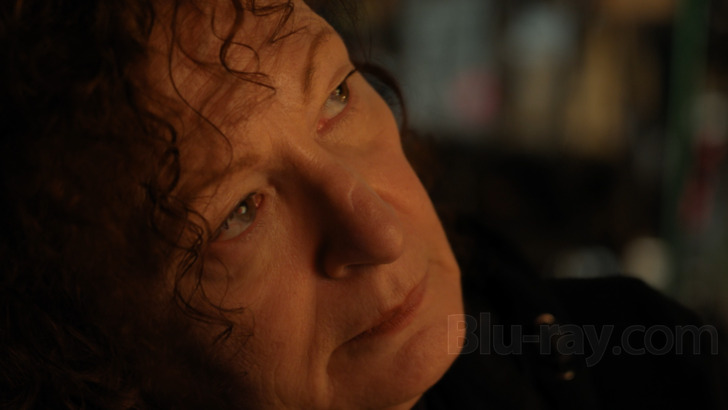
Nervous tension hangs thickly in the air in the opening frames of All the Beauty and the Bloodshed. At New York City's Metropolitan Museum of Art (or, "The Met"), dozens of people are milling about the entryway of the Sackler Wing, keeping a wary eye on security personnel and awaiting a signal. Then it happens. Scores of prescription bottles are thrown into the reflecting pool in the Temple of Dendur installation as chants of "100,000 dead!", and "Sacklers lie! People die!" fill the air. If that's not a name with which viewers are already familiar, they will be unable to forget it by the film's end.
All the Beauty and the Bloodshed focuses on Nan Goldin, an artist and activist who, in 2017, helped create P.A.I.N. (Prescription Addiction Intervention Now), an organization focused on holding the Sackler family accountable for making a fortune through their company, Perdue Pharma's, production and distribution of Oxycontin, a powerful and highly addictive opioid, and buying redemption and respectability by donating millions of dollars to universities and museums around the world. Goldin first became aware of the Sacklers after recovering from opioid addiction herself (she was prescribed the drug after an injury) and reading Patrick Radden Keefe's article in a 2017 issue of "The New Yorker". PAIN's ultimate goal is to have the Sackler name removed from these institutions and prevent any future donations from the Sackler family from being accepted, instead wanting the money to be channeled into programs and projects designed to undo the harm caused by the drug and raise awareness to prevent future tragedy. Considering the vast wealth of the family, it's a David and Goliath story, to be sure.
Over its runtime, the film advances a three-pronged narrative, providing relatively equal airtime to each element. Not only does it focus on Goldin's activism and particularly her involvement with PAIN - its meetings, members, and activities - but it also provides a comprehensive look at Nan Goldin the person, and Nan Goldin the artist. In the beginning, these threads seem separate and distinct with PAIN's story starting relatively recently, her personal story beginning in early childhood, and her artistic self coming to life in her late teens. But by the end, these threads braid together in such a way that it is impossible to tease one apart from the others.
Nan's personal story begins with her recounting her sister Barbara's story. When, at age 1, her mother insisted that Barbara speak in complete sentences, Barbara responded by refusing to speak at all for over a year in defiance. After multiple acts of rebellion during her teenage years, when she was grappling with her own sexuality, her parents responded by institutionalizing Barbara. After moving in and out of multiple facilities, Barbara tragically took her own life and Nan found out her mother did not wish her to know the truth. These events and her own difficult relationship with her parents the resulting experiences would have a profound impact on the trajectory of her life and her focus on the family she creates rather than the family she was born with.
Nan the artist was born with one of her found families in her late teens when she obtained her first camera and started taking pictures. Having found a home with the LGBTQ+ community on the East Coast, she began taking pictures of herself and those around her. At the time when Goldin was able to land her first shows, her offerings were quite different from most of the other photographers on the scene. She shot in color while others preferred black and white. And she captured images that were unlike anything else - she was making a record of lifestyles, people, and locations that were completely foreign to most people, so foreign that they may appear to be carefully staged. But Goldin makes it clear that these were real people in real situations, and the natural beauty, power, and raw authenticity of her subjects and compositions shine through. At various moments during the film, the viewer is treated to brief slide shows not unlike showings of her well-known and ever-evolving "The Ballad of Sexual Dependency" which at times has expanded to over 700 images. During these moments, Goldin reveals important moments and people from her life with astonishing and unflinching honesty and candor, never shying away from anything no matter how unflattering it may be. Instead, she comments on how each of these experiences and people impacted her, changed her, and shaped her future without any judgment or regret. Underneath these voiceover moments, the slide show moves from one arresting picture to another, with the unmistakable sound of a slide projector clicking from one slide to the next.
As an activist, after being seeded during her childhood experiences with Barbara, she truly begins to blossom during the AIDS crisis when all three story threads effectively converge. Goldin had recently emerged from rehab and returned to New York City only to find that the AIDS epidemic was running unchecked and countless people were dying, including her friends and members of her found family. Goldin used her pulpit as an artist to stage a show showcasing the people who were being impacted, their work, and the lack of an acceptable governmental response. Further compounding the crisis, and in direct parallel with the opioid crisis, victims were demonized rather than treated with compassion. We also continue to see the ongoing activism of PAIN as they threw hundreds of fake prescriptions printed with a damning quote from one of the Sacklers from the top of the atrium at the Guggenheim and staged die-ins in other museums. As the film moves from museum to museum, the death count shouted out by Goldin and her group continues to rise; it's 100,000 at the film's start and chillingly over 500,000 by the end.
The film closes as it began, with Barbara's story and PAIN at The Met. After four years of tireless work filled with successes and setbacks, the Sackler name is expunged from The Metropolitan Museum of Art. It's a bittersweet victory. Through paperwork obtained from the facilities where Barbara was placed, we learn the origin of the film's title comes from a quote, "she sees the future and all the beauty and the bloodshed", from an interview conducted with Barbara in one of these institutions before she took her own life. Photography, Goldin says, was (and is) her way to process and work through fear. It allowed her to capture startlingly beautiful images of people looking for a place to belong (herself included), pictures she was ultimately able to use to draw attention to the AIDS epidemic in the 1980s. And again, in 2017, her subsequent work as a photographer led her to be able to have her work on permanent display in the very museums in which she protested and demonstrated with PAIN against the suffering and death caused by opioids and the Sacklers. Years of taking pictures of outsiders had finally made her the ultimate insider, a position she effectively leveraged to bring about positive change.
That the film works so well is as much the function of Poitras' skill as a filmmaker as it is of her subject. Goldin, Poitras says, is intimidating. As an acclaimed artist whose work is on display in museums around the world, it's understandable that she would be. But it's the choices Goldin's made that the film reveals, the good ones and bad ones, the people that she's loved and lost, the times she's been knocked down and knocked herself down, these are the things that make both her and the film so effective and powerful. It's these factors that humanize her, and define her as a much more engaging David. That's what makes her standing up to the Goliaths of both the failed response to AIDS in the 1980s, and the modern lack of accountability for the perpetrators of the opioid crisis and demanding help for its victims all the more incredible.
All the Beauty and the Bloodshed Blu-ray Movie, Video Quality 
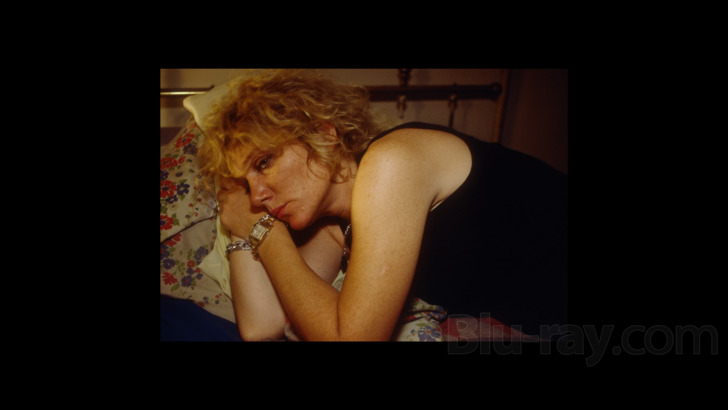
All the Beauty and the Bloodshed's MPEG-4 AVC 1080p transfer is quite solid. While some of the archival footage from television broadcasts of the 1980s and home video footage, for example, do not match the typically high quality of the modern shots captured for Poitras' film, it looks as good as the source material and the scope of the project will allow. The fuzziness and instability of this footage work to the film's advantage, though, as it does serve to place the viewer back in those eras. However, before viewers become overly concerned, the use of such footage is limited, and the duration of such clips is typically short. Regarding the footage shot for this feature, skin tones are universally realistic and healthy-looking, with fine detail being satisfactory enough to note fine lines and wrinkles on the activist's faces, surface particulars on various objects in the museums, and fabric textures as well. Reds, used frequently in the protests, pop when given the chance, and colors in the modern footage are nicely saturated. The source of the modern content is in good shape and is free from defect.
All the Beauty and the Bloodshed Blu-ray Movie, Audio Quality 
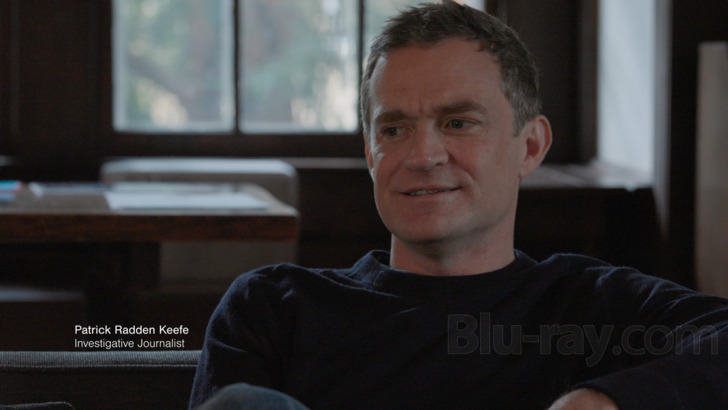
All the Beauty and the Bloodshed's DTS-HD Master Audio 5.1 is more than enough to handle the task at hand. It's primary function is capture dialogue as Goldin either narrates, converses with others at PAIN meetings, or talks and shouts at protests. All of this, from shouts, to hushed recollections, to drumbeats, is done with relative ease. All is rendered with great clarity in this front-centric track. Moments of immersion are rare and are typically associated with brief musical bursts that Golding selected herself; The Velvet Underground's "All Tomorrow's Parties" being a particular highlight. Sound effects are limited to the familiar (if you're of a certain age) "clickity-clack" of a slide projector as it transitions from one image to the next as the film briefly recreates Goldin's "The Ballad of Sexual Dependency" at various moments throughout the feature.
All the Beauty and the Bloodshed Blu-ray Movie, Special Features and Extras 
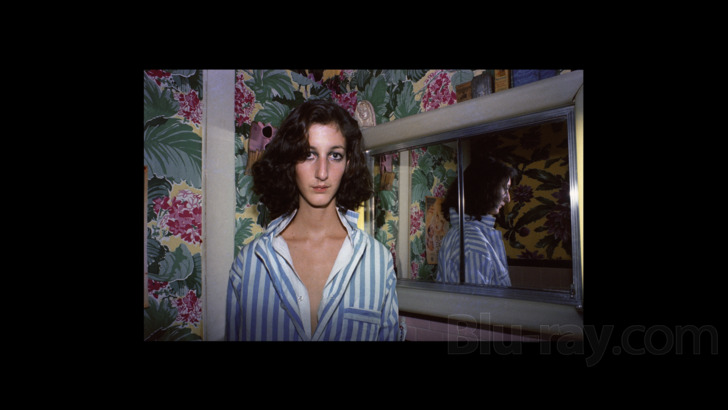
- Interview with Laura Poitras (29.22) - In this 2024 Criterion-produced piece, Director Laura Poitras discusses her previous films, Nan's influence on her as a film student, and the origins of this project that began with a chance encounter with Nan. Poitras also explains her strategy for approaching this film and wanting to focus on her life, work, and relationships.
- Postscreening Conversation (29.18) - Recorded at the 60th New York Film Festival after the film's premiere and moderated by Dennis Lim, the panel features Goldin, Poitras, and PAIN members Megan Kapler, Harry Cullen, and Mike Quinn. The group addresses the origins of the project and responds to a host of questions from the audience which are thankfully printed on the screen.
- On Art and Activism (20.35) - Also sourced from the 60th New York Film Festival, Goldin discusses activist politics, from the AIDS crisis to the opioid crisis, and her art with Rachel Rakes. Audience questions are again printed on the screen.
- Trailer (2.23)
- Booklet - Featuring an essay entitled 'The Highest Stakes' by writer and AIDS historian Sarah Shulman, the work covers Goldin, Poitras, and the film. A selection of Goldin's photographs are also reprinted.
All the Beauty and the Bloodshed Blu-ray Movie, Overall Score and Recommendation 
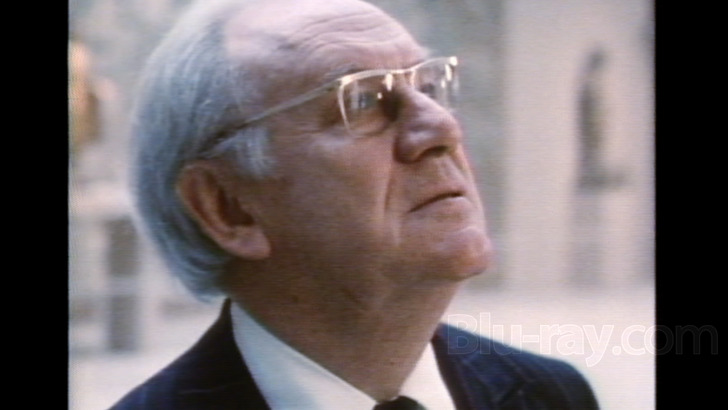
Recent data from the Health Resources and Services Administration suggest that as of December of 2023, more than 130 people die each day as a result of overdoses from an opioid-related drug. That's one death every 11 minutes. As the work of the activists and various victims who provide impact statements and personal stories in this film demonstrates, the opioid crisis is one that has the potential to impact everyone regardless of race, creed, gender, class, age, or any other defining or stratifying characteristic one cares to consider. Director Laura Poitras pairs the viewer with Nan Goldin, an acclaimed photographer and former opioid addict herself, on a journey from her childhood and troubled family life, to the start of her photographic career and her activism during the AIDS epidemic, to PAIN's modern fight against a family who seems shielded by every entity that should be holding them accountable. Blending her voice and story with her art, it's an intensely powerful and intimate work. Funny, tragic, crushing, uplifting, and beautiful, All the Beauty and the Bloodshed comes highly recommended.
Similar titles
Similar titles you might also like
(Still not reliable for this title)

The Wolfpack
2015

Poison
1991

Streetwise
1984

3-D Rarities
1922-1962

Anthem
1991

The Flying Deuces
Laurel & Hardy
1939

Charlie Chan and the Curse of the Dragon Queen
1981

Son of the Pink Panther
1993

Where's Poppa?
1970

Wonders of the Arctic 4K + 3D
IMAX
2014

The Prisoner of Second Avenue
Warner Archive Collection
1975

Easy Street
1917

The Last Reef: Cities Beneath the Sea 4K + 3D
2012

IMAX: Dream Big: Engineering Our World 4K + 3D
2017

Sons of the Desert
1933

Mysteries of Ancient China 4K
IMAX: Mysteries of China
2016

Yum, Yum, Yum! A Taste of Cajun and Creole Cooking
1990

Gap-Toothed Women
1987

Los Angeles Plays Itself
2003

National Parks Adventure 4K + 3D
2016